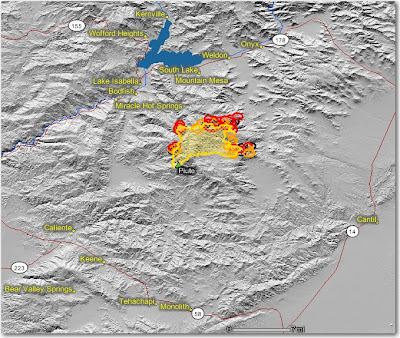The weather is going to be hotter and drier for the next couple of days for the Basin fire in the Big Sur area of California. At the 2,000-2,500′ level east of Big Sur, the maximum temperatures through Wednesday will be around 90, with the minimum relative humidities around 20%. There will be poor humidity recovery, or lower than normal maximum RH’s at night. The ridgetop winds will be moderate at 5-10 mph, mostly out of the northwest or north, through Wednesday.
The fire’s intensity will increase, but having the wind at their back while conducting the firing operation on the northwest and north sides will make it a little easier for the firefighters in that area. However, the north-component winds will complicate the firing on the south side around the North Coast Ridge Trail and Dolan Ridge. Increasing instability in the atmosphere may contribute to greater fire spread and more convection columns of smoke.





